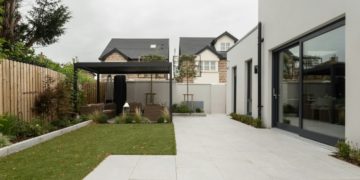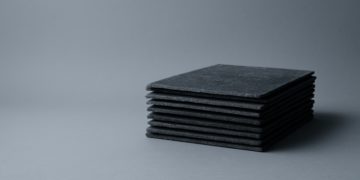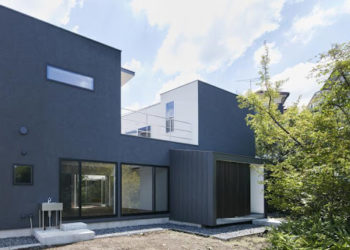In the modern real estate market, homeowners are increasingly seeking innovative ways to enhance the value of their properties while maximizing the utility of their available space. One solution that has gained immense popularity over the past decade is the garden room—a standalone structure built within the garden or backyard of a property. Unlike traditional sheds or temporary outbuildings, garden rooms are thoughtfully designed architectural spaces that combine functionality, aesthetics, and sustainability. They can serve a wide range of purposes, from home offices and art studios to gyms, guest accommodations, or simply private retreats. With growing demand for flexible living arrangements and home-based workspaces, garden rooms have become a sought-after feature that not only improves the day-to-day living experience but also significantly enhances property value.
The Evolution of Garden Rooms in Modern Architecture
“Historically, garden structures were primarily functional, designed to store tools, gardening equipment, or firewood. They rarely contributed to the architectural appeal of a home or its market value. However, in recent years, there has been a dramatic shift in both design philosophy and homeowner expectations. Architects and designers now approach garden rooms as integral elements of a property’s overall layout, ensuring that they harmonize with the existing architecture while offering modern functionality. The use of high-quality materials, contemporary design principles, and sustainable building practices has transformed garden rooms into attractive, versatile extensions of the home. This evolution reflects broader trends in residential architecture, where every square foot of space is optimized for aesthetic appeal, practicality, and long-term value.” adds Mr Paul Kirk, Director of Rockwood Garden Studios
How Architectural Design Enhances Garden Rooms
A well-designed garden room goes beyond being a mere outdoor structure; it is a thoughtfully crafted space that integrates form and function seamlessly. Designers often prioritize natural light, using floor-to-ceiling windows, skylights, or glass doors to create bright, inviting interiors that blur the boundaries between indoor and outdoor living. Materials like natural timber, stone, and steel allow for durability while providing visual appeal that complements the main property. Interior layouts are often flexible, with open floor plans that can accommodate various activities, whether it’s a home office, a studio, or a personal retreat. Additionally, modern garden rooms incorporate insulation, heating, and ventilation systems, ensuring comfort throughout the year. By blending architectural innovation with functionality, garden rooms provide a lifestyle upgrade that appeals to homeowners and prospective buyers alike.
Adding Value to Your Property Through Garden Rooms
“From a real estate perspective, garden rooms offer tangible value that extends beyond aesthetics or convenience. Experts in the property market estimate that adding a well-designed garden room can increase a home’s market value by up to 15%, depending on the location, design quality, and size of the structure. This value is derived not only from the additional usable space but also from the flexibility it offers to homeowners. Prospective buyers are increasingly attracted to properties that provide multifunctional areas that can serve as home offices, exercise spaces, or guest accommodations, particularly in urban areas where space is limited. In addition, garden rooms create an impression of modernity, attention to detail, and innovative living solutions, making a property stand out in competitive real estate markets.” adds Daniel Cabrera, Owner and Founder of Fire Damage House Buyer
The Role of Sustainability in Garden Room Design
“Sustainability has become a key consideration for both architects and homeowners in the 21st century. Environmentally conscious design practices are now integral to garden room construction, reflecting broader societal trends toward green living and energy efficiency. Features such as solar panels, energy-efficient lighting, rainwater collection systems, and high-performance insulation not only reduce a property’s environmental footprint but also appeal to eco-minded buyers. Furthermore, the use of sustainably sourced materials like reclaimed timber or natural stone enhances both the environmental and aesthetic value of the space. By integrating sustainable features, garden rooms address the growing demand for eco-friendly homes while simultaneously enhancing the long-term financial and functional value of the property.” adds Emily Peterson, CEO of Saranoni
Garden Rooms as Home Offices and Remote Workspace
The global shift toward remote work has transformed the way homeowners view their living spaces, and garden rooms have emerged as an ideal solution for dedicated home offices. Unlike traditional in-home work areas, which often compete with domestic distractions, garden rooms offer privacy, quiet, and separation from the main living spaces. Architects design these spaces with ergonomic layouts, sufficient natural light, and climate control, creating an environment conducive to productivity. For professionals working remotely or running small businesses from home, a garden room can be a practical investment that increases efficiency and enhances quality of life. This functional appeal also makes the property more attractive to future buyers, particularly in markets where flexible workspaces are highly valued.
Maximizing Lifestyle Benefits
“Beyond financial and professional advantages, garden rooms enhance lifestyle and personal well-being. They provide homeowners with a dedicated space for hobbies, fitness, meditation, or entertainment, offering respite from the pressures of daily life. A yoga studio, art workshop, or personal gym can be seamlessly integrated into the garden room design, allowing homeowners to pursue their passions conveniently at home. Some designs include small kitchens, seating areas, or even compact bathrooms, further expanding their versatility. By prioritizing lifestyle enhancements, garden rooms contribute to a holistic living experience that enhances both the enjoyment and marketability of a property.” shares Ashley Durmo, CEO at Chalet
Integration with Landscaping and Outdoor Spaces
“The impact of a garden room is magnified when it is integrated thoughtfully with surrounding landscaping. Architects often design pathways, decks, patios, and gardens that connect the garden room to the main property, creating a cohesive outdoor environment. Plantings, lighting, and water features can enhance the visual appeal and usability of the space, turning it into a sanctuary that blends with nature. This integration also improves property aesthetics from an external perspective, which is particularly important when considering market value. Prospective buyers often appreciate the combination of architectural innovation with carefully designed outdoor living spaces, perceiving it as a premium feature.” shares Gabriel Gomez, founder of Bear Mountain Roofing
Case Studies: Real-Life Examples
Several homeowners have successfully enhanced their properties through the addition of garden rooms. For example, a family in Surrey converted their backyard into a multifunctional garden room that served as a home office, gym, and guest space. The project not only improved daily convenience but also increased the property’s valuation significantly when it was later listed for sale. Another example includes a London-based couple who transformed a garden studio into a wellness retreat, incorporating sustainable materials and floor-to-ceiling glass walls. Testimonials consistently emphasize the dual benefits of increased property value and improved lifestyle, demonstrating that well-executed garden rooms are a practical and rewarding investment.
Trends in Modern Garden Room Design
“The design of garden rooms continues to evolve, influenced by technological advancements, sustainability trends, and changing lifestyles. Contemporary trends include modular construction for rapid installation, smart home integration for climate control and security, and minimalistic designs that maximize space and light. Additionally, mixed-use garden rooms are becoming popular, combining office, relaxation, and entertainment functions in a single versatile structure. These trends indicate that the garden room is no longer a niche addition but a mainstream architectural solution that addresses modern living needs while boosting property value.” shares Carl Panepinto, Marketing Director at Manhattan Flood Restoration
Challenges and Considerations
While garden rooms offer numerous benefits, careful planning is essential to avoid common pitfalls. Budgeting, local planning regulations, site preparation, and integration with existing architecture are critical factors. Homeowners must also consider maintenance, insulation, and accessibility, particularly for garden rooms that are used year-round. Collaborating with professional architects and builders ensures that the structure meets both functional and aesthetic requirements, maximizing its impact on property value. Awareness of these considerations allows homeowners to make informed decisions and avoid costly mistakes, ensuring that the garden room delivers long-term benefits.
Conclusion: Garden Rooms as a Strategic Investment
Garden rooms represent a compelling intersection of architecture, lifestyle, and real estate value. They offer versatile living spaces that enhance daily life, support remote work, and provide a sanctuary for hobbies and wellness. From a financial perspective, well-designed garden rooms contribute significantly to property value, making them a strategic investment for homeowners looking to maximize returns. By integrating sustainable materials, innovative design, and thoughtful landscaping, garden rooms demonstrate how architectural creativity can directly impact real estate outcomes. As trends in home living continue to evolve, garden rooms are poised to remain an essential feature for homeowners seeking both luxury and practicality, proving that the right design can transform a property from ordinary to extraordinary.












































































